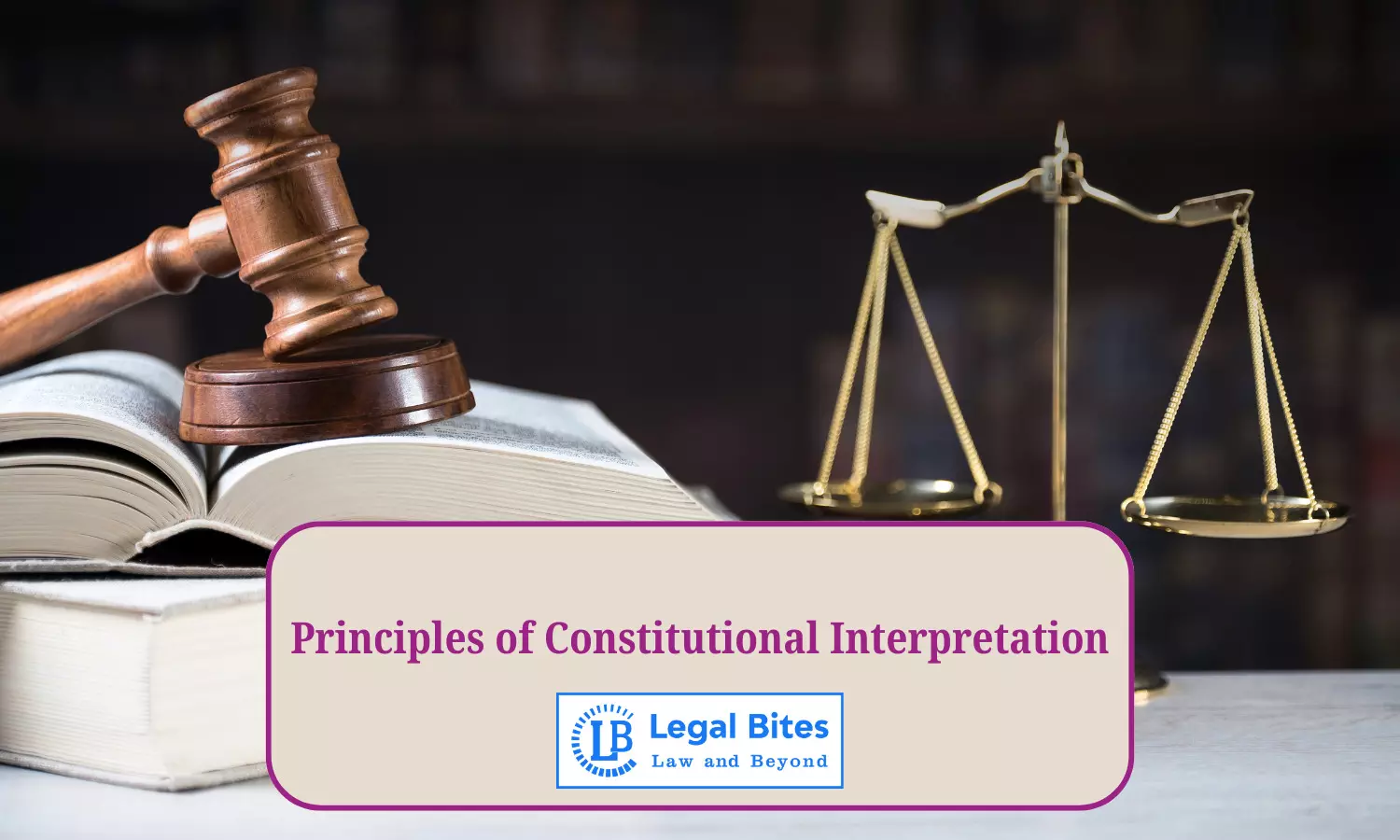Principles of Constitutional Interpretation
Constitutional interpretation refers to the process by which courts and legal authorities determine the meaning, scope, and application of constitutional provisions.

The Constitution is the supreme law of the land and serves as the foundation upon which the legal framework of a nation is built. Constitutional interpretation is the process by which courts analyze and apply constitutional provisions to resolve legal disputes. Since constitutional provisions are often broad and ambiguous, judges rely on established interpretative principles to extract their true intent and meaning. The interpretation of constitutional provisions requires a careful...
The Constitution is the supreme law of the land and serves as the foundation upon which the legal framework of a nation is built. Constitutional interpretation is the process by which courts analyze and apply constitutional provisions to resolve legal disputes. Since constitutional provisions are often broad and ambiguous, judges rely on established interpretative principles to extract their true intent and meaning. The interpretation of constitutional provisions requires a careful balance between ensuring stability and accommodating societal changes.
Meaning and Importance of Constitutional Interpretation
The Constitution is not a static document but a dynamic framework that governs the political and legal structure of a nation. It provides the foundation for the functioning of the state, protection of fundamental rights, and maintenance of democratic governance. As the supreme law, the Constitution's language often requires clarification and contextual adaptation to address contemporary issues.
Constitutional interpretation serves the following purposes:
- Clarification of Constitutional Text: The language of the Constitution may be ambiguous, broad, or general, requiring judicial interpretation to define its scope and meaning.
- Resolution of Conflicts: Conflicts between different provisions of the Constitution, or between constitutional principles and statutory laws, require resolution through interpretation.
- Protection of Fundamental Rights: The judiciary interprets constitutional provisions to safeguard fundamental rights from legislative or executive encroachment.
- Adaptation to Social and Political Change: A constitution must adapt to changing social, economic, and political realities. Interpretation ensures that constitutional principles remain relevant over time.
- Maintenance of the Constitutional Structure: The judiciary ensures that the balance of power between the executive, legislature, and judiciary is maintained through constitutional interpretation.
General Principles of Constitutional Interpretation
Constitutional interpretation is guided by several well-established principles that have evolved through judicial decisions and legal scholarship. These principles ensure that the interpretation of constitutional provisions is consistent, rational, and aligned with the foundational values of the Constitution.
1. Doctrine of Pith and Substance
The doctrine of pith and substance is applied to determine the true nature and scope of a legislative provision when there is an apparent conflict of jurisdiction between the central and state governments. The essence or true subject matter of the law is examined to ascertain whether it falls within the legislative competence of the enacting authority.
In State of Bombay v. F.N. Balsara (1951 AIR 318), the Supreme Court applied the doctrine of pith and substance to uphold a state law regulating alcohol, even though it incidentally touched upon the central subject of import and export.
2. Doctrine of Colorable Legislation
The doctrine of colourable legislation holds that the legislature cannot do indirectly what it cannot do directly. If a law is passed under the guise of exercising a lawful power but in reality seeks to achieve an unconstitutional objective, it is declared invalid.
In K.C. Gajapati Narayan Deo v. State of Orissa (AIR 1953 SC 375), the Supreme Court held that a law enacted to acquire private property under the guise of a public purpose was colourable legislation.
3. Doctrine of Severability
Under this principle, if a part of a statute is declared unconstitutional, only the offending provision is struck down, and the remainder of the statute is retained if it can function independently.
In R.M.D. Chamarbaugwalla v. Union of India (AIR 1957 SC 628), the Supreme Court upheld the doctrine by striking down unconstitutional portions while retaining the valid parts of the statute.
4. Doctrine of Eclipse
The doctrine of eclipse applies to pre-constitutional laws that violate fundamental rights. Such laws are deemed dormant and unenforceable but are not entirely void. They can be revived if constitutional amendments remove the inconsistency.
In Bhikaji Narain Dhakras v. State of Madhya Pradesh (AIR 1955 SC 781), the Supreme Court applied this doctrine to uphold the validity of certain laws following the amendment of fundamental rights provisions.
5. Doctrine of Prospective Overruling
This doctrine allows courts to limit the retrospective application of a new legal interpretation. While the new interpretation applies to future cases, past actions conducted under the previous interpretation remain unaffected.
In Golaknath v. State of Punjab (AIR 1967 SC 1643), the Supreme Court invoked this doctrine to protect legislative amendments enacted prior to the court's ruling.
6. Doctrine of Purposive Interpretation
This principle encourages courts to interpret constitutional provisions in light of their underlying objectives and societal needs. The purposive approach emphasizes the intention of the framers rather than focusing strictly on the text.
In Maneka Gandhi v. Union of India (AIR 1978 SC 597), the Supreme Court adopted a purposive approach to expand the scope of Article 21, ensuring the right to personal liberty is interpreted broadly.
Challenges in Constitutional Interpretation
Despite the well-established principles, interpreting constitutional provisions presents several challenges:
- Ambiguity in Language: Constitutional provisions are often drafted in broad language, leaving room for multiple interpretations.
- Balancing Rights and Duties: Courts must strike a balance between protecting individual rights and preserving social order.
- Dynamic Societal Changes: As societal norms evolve, constitutional interpretations must adapt to ensure justice and equality.
- Judicial Activism v. Judicial Restraint: Courts must exercise caution to prevent judicial overreach while ensuring justice is served.
Conclusion
Constitutional interpretation plays a crucial role in maintaining the rule of law, safeguarding individual rights, and upholding the democratic framework. The principles of interpretation ensure that constitutional provisions are applied fairly and consistently. By adopting approaches such as harmonious construction, purposive interpretation, and the doctrine of basic structure, courts safeguard the spirit of the Constitution while allowing it to adapt to changing societal needs.
A balanced and thoughtful application of these principles ensures justice, equity, and the preservation of fundamental rights in modern legal frameworks.
Important Link

Apurva Neel
I am a Research Associate and Editor at Legal Bites with an LL.M. specialization in Corporate and Commercial Laws from Amity University, Mumbai. I have put my best efforts into presenting socio-legal aspects of society through various seminars, conferences etc. I keep refining content as I am an ardent writer, and palpably law has got multi-dimensional aspect, so I passionately try to explore ahead.
